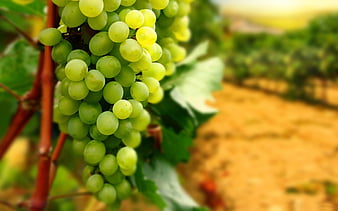Although the relationship between nature and plants is very strong, plants have to bear the brunt of nature's whims. (This is the food of man and other creatures) We have seen in the previous parts that the grape vine is ready for the new spring only after a lot of rest, it is during this rest period that the garden needs to be nourished, now we have to determine how much we want to produce, in the first spring. The amount of yield is also important, it has been observed that often if there is a high yield in the first spring, then there is less yield in the next spring and if there is a low yield in the first spring, then there is a higher yield in the next spring, but after rough pruning, if the garden is taken care of regularly, uniform yield can be obtained. Possible, (baggage food and water, proper pruning and management are important). During the rest period, it is necessary to have the correct number of canes on each vine depending on the variety and the leaves to be healthy and plump until the end, many problems arise from partial nutrition, early succumbing to grapevine diseases and pests, malcanes remaining unripe, and then we have to deal with the problems, before pruning each year. Soil testing in the vineyard is necessary to do soil testing in school, it is easy to determine how much nutrients are in your soil then how much to give for the desired production. Many times it is also seen that there is a lot of nutrients in the soil but they are not able to grow the crop or those nutrients are non-degradable, 15-20 years ago this problem was very rare but now it has become a big problem in many places. There are many reasons for this. In my opinion, the main reason is the excess and insoluble salts in the soil. In fact, if there is a lot of regular seasonal rain, these salts should be washed away from the soil by drainage (leachout). are going on and the amount of salts in the soil is increasing. Electrical conductivity (EC) of soil is increasing. As we have seen in the back section, grapevine leaves make their own food with the help of sunlight, carbon dioxide and water, and as the plant does this process, nutrients (NPK, micro and micro) from the soil help the plant, (nutrients supplied from the soil neither the plant nor its own). There is a constant need between different stages) Here a causal event takes place, the plant which is creating food reserves for itself, in the process energy is created in the leaf, shoot and stem, this energy is influenced by positive charge (positive charge) and this energy is further transformed into the main product. After a certain stage (before the end of the rest period and before stress) this energy needs to be stored in the inner part of the vine, but during this time the negative charge is active in the soil, and the positively charged energy in the tree is released into the soil. (This problem is more common in other fruit crops than grapes) Due to the accumulation of easily conductive metallic elements near the roots, there is little food supply left in the vine, and then the vineyard runs from there. Grape vines continue to suffer in some form such as lack of uniformity of shoots, increase in number of barren shoots, blight or diseases. There is only one solution and that is to enrich the soil. "Cultivation only if the soil is rich" is one of the challenges facing vineyards in the future.
author-
Mr. Subhash Chandra Karale Sir
Director, SV Agro Solutions
